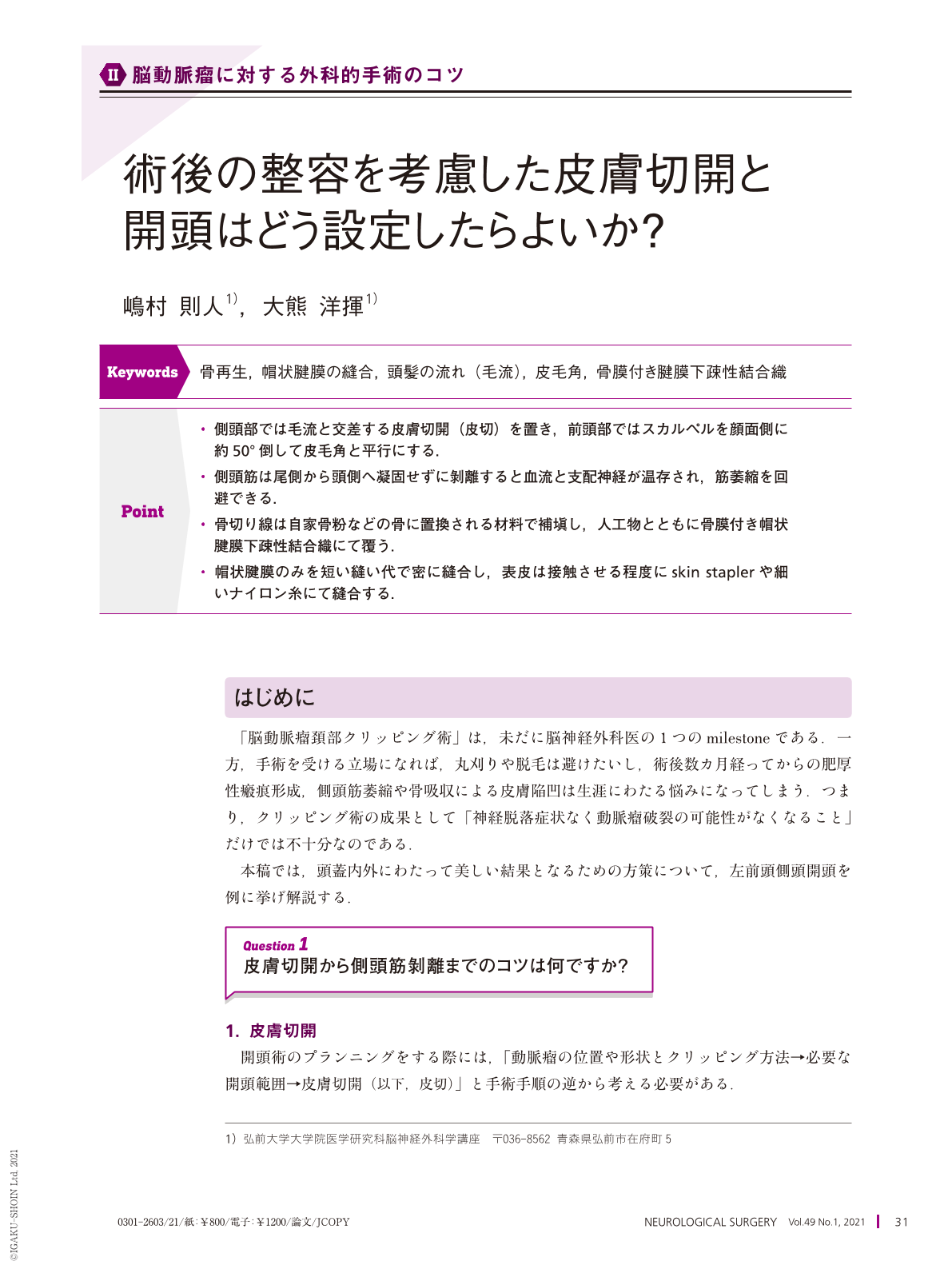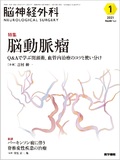Japanese
English
- 有料閲覧
- Abstract 文献概要
- 1ページ目 Look Inside
- 参考文献 Reference
Point
・側頭部では毛流と交差する皮膚切開(皮切)を置き,前頭部ではスカルペルを顔面側に約50°倒して皮毛角と平行にする.
・側頭筋は尾側から頭側へ凝固せずに剝離すると血流と支配神経が温存され,筋萎縮を回避できる.
・骨切り線は自家骨粉などの骨に置換される材料で補塡し,人工物とともに骨膜付き帽状腱膜下疎性結合織にて覆う.
・帽状腱膜のみを短い縫い代で密に縫合し,表皮は接触させる程度にskin staplerや細いナイロン糸にて縫合する.
A successful microsurgical neck clipping of cerebral aneurysm is one of the milestones for neurosurgeons. However, a ‘complete clip closure of aneurysm without neurological deficit' is not enough for the patient, as esthetic problems can occur several months after the surgery. In this paper, we describe a series of surgical tips concerning the surgical steps starting from skin incision to craniotomy to minimize the esthetic impact. First, the skin incision should be oriented perpendicular to the fall pattern of hair follicles in the temporal area so that the hair covers the scar line and the scalpel is tilted about 50° to face in the frontal area for preservation of hair roots. After minimum coagulation and skin clip application, interfascial fat pad is dissected at 2 cm dorsal to McCarty keyhole to root of zygomatic process, in order to protect facial nerve. Subgaleal connective tissue with periosteum is harvested as a flap for reconstruction of the calvarial defect. The temporal muscle should be dissected from the caudal to rostral position to avoid delayed muscular atrophy. Central dural tenting sutures are placed at the dural incision. The craniotomy line should be filled with bone crust and covered by subgaleal connective tissue with the periosteum. Single, short-distance galeal sutures, and loose skin sutures can reduce post-operative granulation. From the day after surgery, the patient can shampoo his/her head.

Copyright © 2021, Igaku-Shoin Ltd. All rights reserved.


